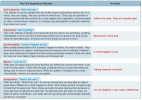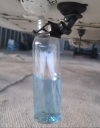Dan Thomas
Touchdown! Greaser!
- Joined
- Jun 16, 2008
- Messages
- 10,763
- Display Name
Display name:
Dan Thomas
A good article on AVweb this morning:
https://www.avweb.com/insider/lesso...utm_campaign=avwebflash&utm_medium=newsletter
From one of the comments:
An old timer once told me, “ They haven’t found a new way to crash a plane in 50 years” ( that would be 80 now).
The “good” instructors get their students through in the minimum time and use every loophole in the regs to do so. They figure they can pick up judgement somewhere along the way. Maybe.
Add in irresponsible YouTube showboats and their worshippers and you wonder why it’s not raining aluminum every day.
https://www.avweb.com/insider/lesso...utm_campaign=avwebflash&utm_medium=newsletter
From one of the comments:
An old timer once told me, “ They haven’t found a new way to crash a plane in 50 years” ( that would be 80 now).
The “good” instructors get their students through in the minimum time and use every loophole in the regs to do so. They figure they can pick up judgement somewhere along the way. Maybe.
Add in irresponsible YouTube showboats and their worshippers and you wonder why it’s not raining aluminum every day.




